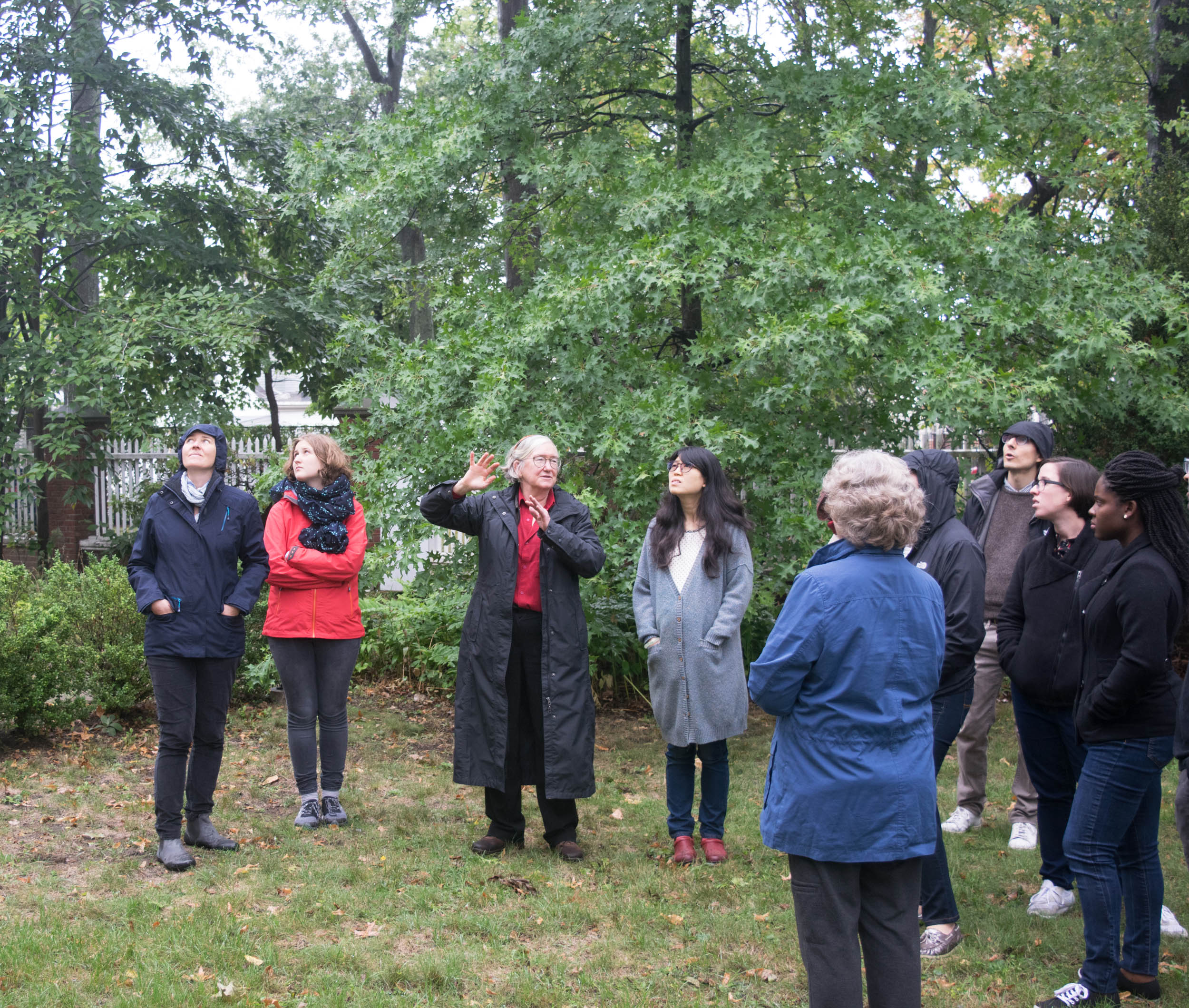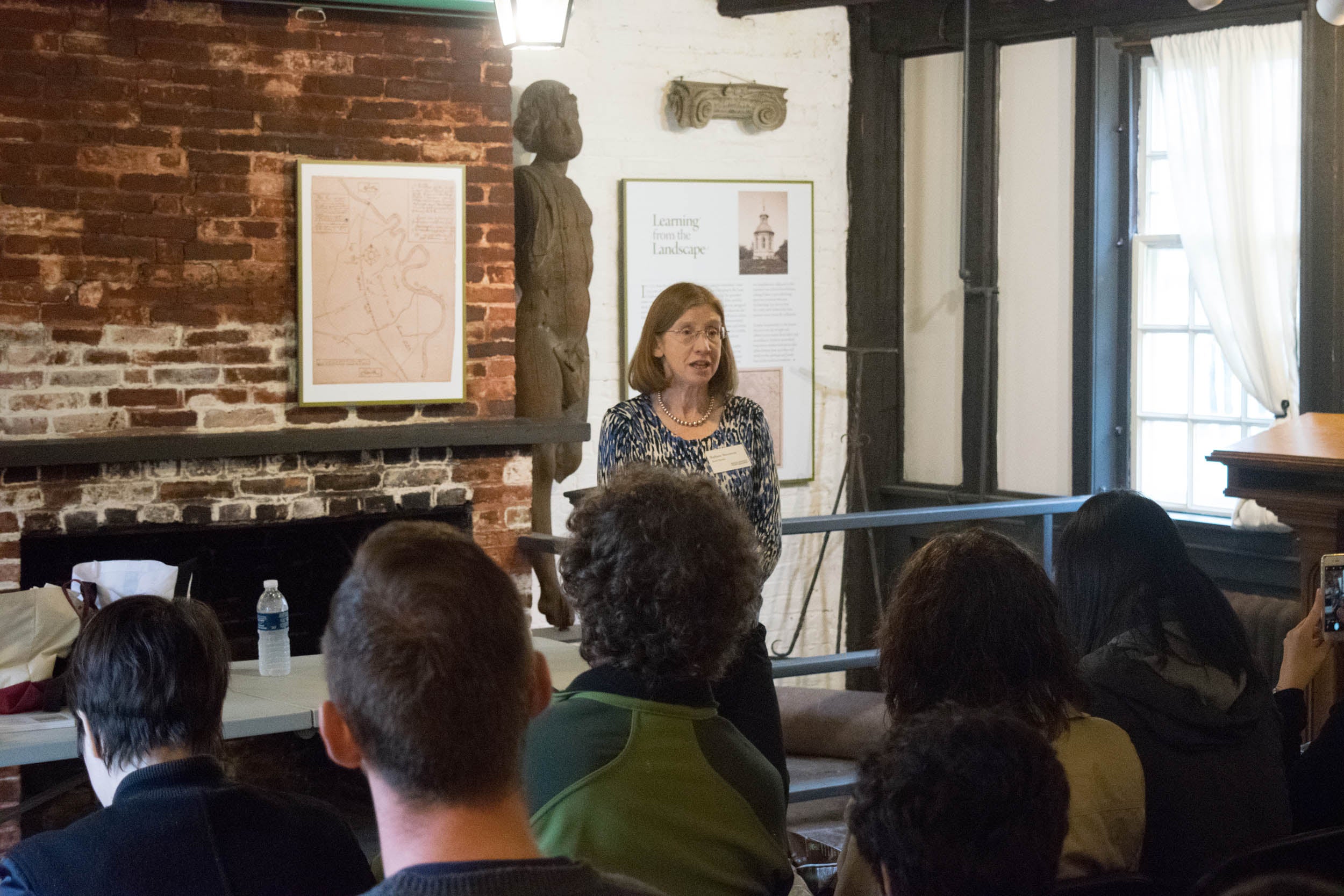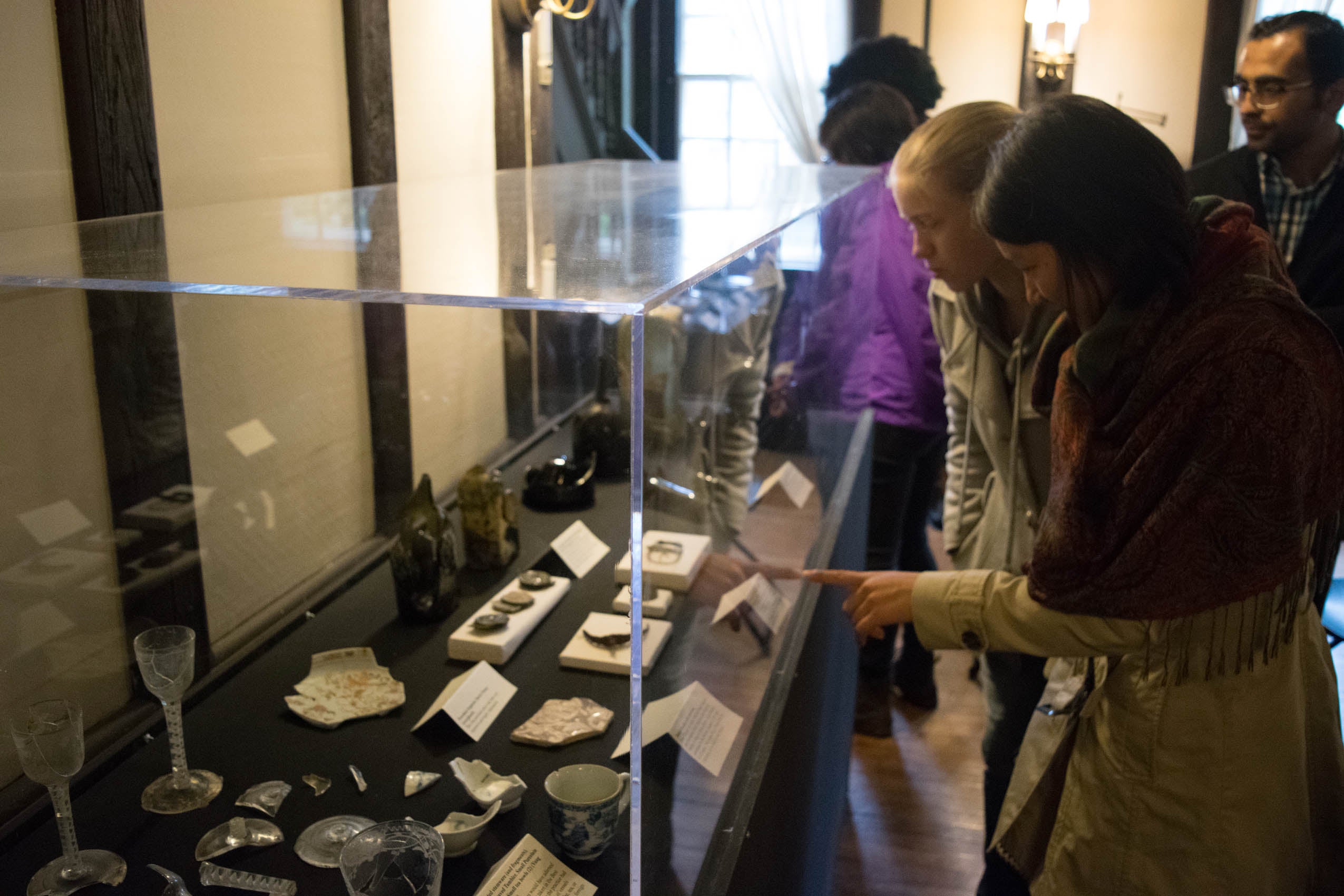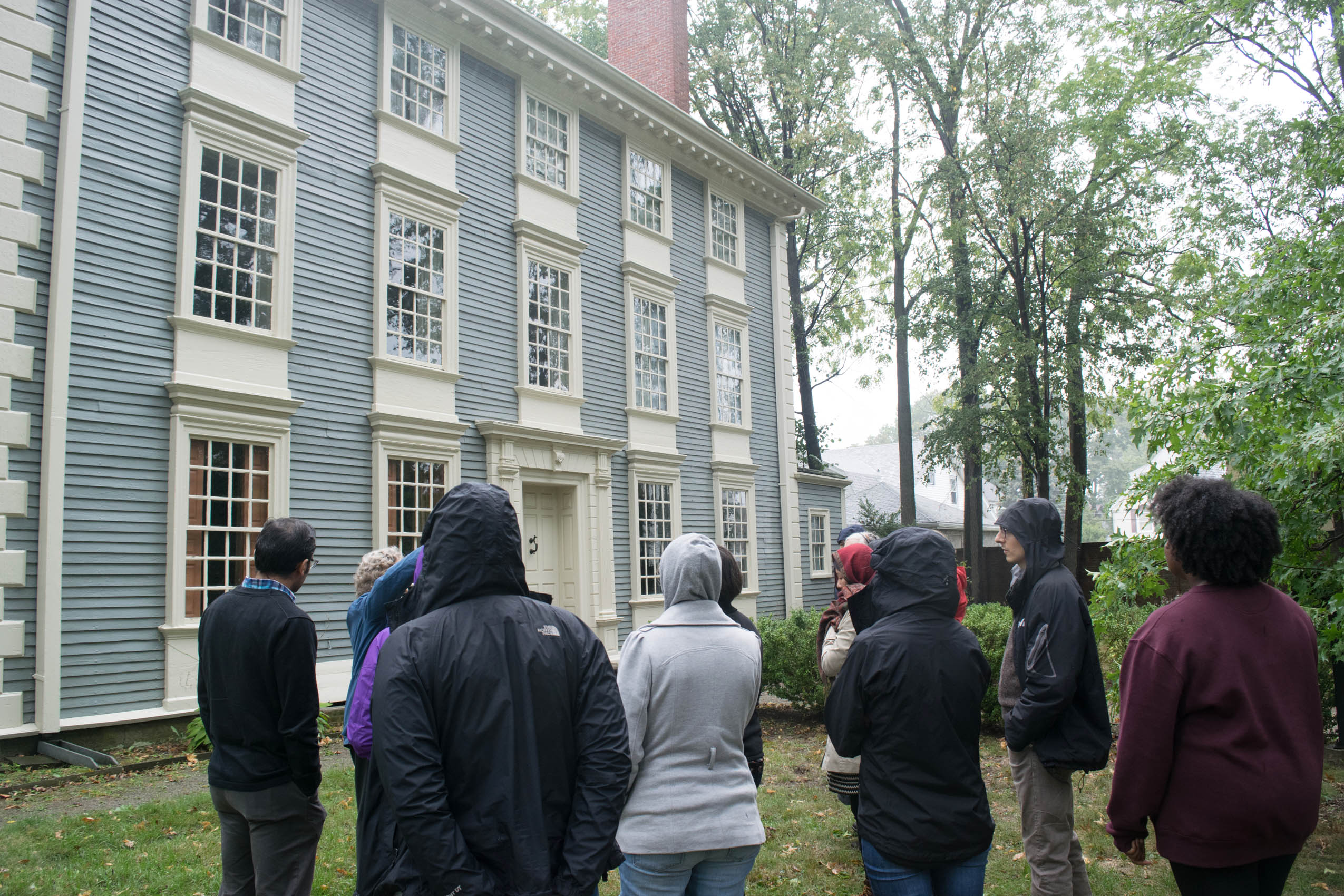Earlier this month, Harvard Law School’s Royall Professor of Law, Janet Halley, took first-year HLS students in her Reading Group on the Law School’s connection to New England’s slavery heritage to visit the Royall House and Slave Quarters in Medford, Massachusetts. The tour, which was sponsored by the HLS Institute for Global Law and Policy, was open to the entire HLS community, and it generated such an overwhelming response that Halley has scheduled a second one for later this month.
The Royall House and Slave Quarters showcases archeological and historical information about Isaac Royall, an 18th century slaveholder whose bequest established the first law professorship at Harvard, and the people he held as slaves. The Royall slave quarters are the only known freestanding slave quarters in the northern United States.
More than 50 students signed up for the first tour, and an additional 30 people were placed on a wait list.
Halley said, “I hope that engaging our Isaac Royall heritage by going on the RH&SQ tour becomes a shared tradition of HLS students, alums, faculty and staff. Nothing substitutes for being on the very site where Royall, Belinda Sutton, and others of such importance to us, actually walked.”

Royall’s father — Isaac Royall, Sr. — made his fortune in Antigua as a slave trader and plantation owner. He returned to his native New England after a slave rebellion caused island slaveholders to institute a fierce repression. In 1739, Royall, Sr. moved into the newly built mansion with 27 enslaved Africans, making the Royalls the largest slaveholding family in Massachusetts. Daniel R. Coquillette and Bruce A. Kimball, in their new book “On the Battlefield of Merit: Harvard Law School, The First Century,” relate that Isaac Royall, Jr. inherited the home upon his father’s death. He fled to London at the outbreak of the Revolutionary War and died there, leaving the will that bequeathed property to Harvard University that established the first law professorship here. Census and probate records have preserved the names of more than 60 enslaved men, women, and children who supported the family’s lavish lifestyle over the course of their 40-year tenure in Medford.
According to Halley, the tour offers a view of the Royall family and the cultural framework of colonial mercantilism and slave trading in New England. It also provides insight into the very different ways in which the black and white inhabitants of the Royall House lived on the property.
Most of what is known about the daily lives of Royall’s slaves has been unearthed through the archaeological investigations of Alexandra Chan at the site. More than 65,000 objects and fragments have been recovered from the Royall House grounds, including earthenware vessels, Chinese porcelain, and a bottle with the Royall seal, which displays three sheaves of wheat and was adopted in 1937 for the shield of Harvard Law School.


In 2015, a group of HLS students calling themselves Royall Must Fall called for the retirement of Harvard Law shield. At the request of HLS Dean Martha Minow, a special committee of faculty, students and staff reviewed the history of the shield and recommended that it be abandoned. In March, the Harvard Corporation accepted the recommendation.
This fall, the Harvard Law School Library opened a new exhibit — Facing History and Looking Forward: Retiring the Harvard Law School Shield — on the history of the Harvard Law School shield, documenting the shield’s ties to the family of Isaac Royall, Jr. and the Law School-wide process that led to the retirement of the shield.
Following the tour, Barbara Berenson ’84, a RH&SQ board member and senior attorney at the Massachusetts Supreme Judicial Court, gave a brief talk on the history of slavery in Massachusetts and the legal cases that led to Massachusetts being the first of the 13 states to officially end slavery. Berenson is the author of “Boston in the Civil War: Hub of the Second Revolution” (The History Press 2014) and “Walking Tours of Civil War Boston: Hub of Abolitionism.”
Halley was named Royall Professor of Law in 2007. Upon assuming the professorship, she gave a lecture titled “My Chair and Your Chair: Reflections on our Isaac Royall legacy,” in which she first explored ideas about how HLS should confront, acknowledge and judge its historic debt to the slaveholder. “The fact that the funds that established the Royall Chair derived, directly and/or indirectly, from the sale of human beings and the appropriation of their labor — these are facts,” said Halley. “What does one do about them? Thinking in binarized terms of condemnation and redemption just doesn’t seem to capture the complexity of this question.”
The Royall House Association was established in 1906. The Daughters of the American Revolution raised funds to purchase and preserve the property. The current mission of the Royall House and Slave Quarters grows out of an intensive reassessment of the museum’s role and future undertaken in 2005.
